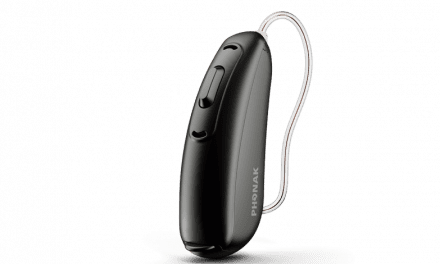To create a new and dynamic approach for dealing with patient reluctance and denial, the hearing care professional needs to look to the past in order to move forward in the future. Socrates taught his students with inquiry, a process now known as the Socratic Method. Voltaire suggested that we should not judge a man by the answers that he gives; rather, we should judge a man by the questions he asks.
If these two great philosophers were powerful and effective enough in their effort to move mankind toward self-discovery via the idea that we should be asking tough questions, then we—as hearing care professionals—should be willing to explore this same approach for our profession and our patients. Since the invention of the audiometer, we have known at least something about the patient’s hearing level, but clearly that knowledge has not helped much with those patients who—for whatever reason—are unwilling to acknowledge, accept, or seek treatment for their growing disconnection from the world of sound.
As the authors travel the country giving seminars to hearing care professionals, we are told that at least 80% of those who refuse hearing help are reluctant to accept what they are told by the hearing professional. Seemingly patients are seeking “help” and—only tangentially—scientific expertise. You know that they come to your office for some reason, yet getting the patient to acknowledge the real reason often seems beyond their capabilities. Thus, the hearing care professional is treated to a litany of inadequate answers regarding the true motivation for patient visit.
One might envision that the patient has wandered into a deep forest and is now sitting on a log, reflecting on how to get back to the world of communication. As a professional, your place “on the log” is that of an equal partner in the discussion.
This concept can be frightening to those professionals who think being in control is paramount to the success of the appointment. Consequently, the vast majority of hearing care professionals talk too much, advise too much, and educate far too much during the initial case history—literally leaving their patients speechless when asked “Do you have any questions?” We know that the average patient has delayed the appointment to see a hearing care professional for 7-10 years. We should also realize that it is monumental that they have made this first step. In most cases, there is a significant reason buried somewhere beneath the surface for why the patient made the appointment at this time.
Many well-meaning hearing care professionals sometimes take a distinctively Pavlovian approach to counseling: they think they must “ask the patient into submission” so that the patient will finally admit to a hearing problem. Until admission is gained, it is believe that the professional cannot move forward successfully. When hearing professionals do move forward without admission, the fleeting hope is that, through the use of the audiogram, the professional can prove and convince the reluctant patient who is in denial to take action and purchase hearing aids. It’s true that some patients do respond to this tactic; however, in view of the industry’s low market penetration rates and high return rates, it appears that we should adopt a larger vision. The patients are not going to change, so if the industry is to grow, the hearing care professionals will need to change.
Listening and Facilitating the Telling of the Patient’s Story
In our view, one of the largest factors impeding effective counseling is that professionals need to learn to listen to the patient. We must learn to let natural human curiosity guide us during the interview, and we must trust ourselves to ask powerful questions that will take this process in a positive direction.
There are some rote questions that we sometimes find ourselves asking without any particular patient lead-in. These include:
- Do you think you have a hearing problem?
- How long have you had problems with your hearing?
- Does anyone else in your family have a hearing problem?
- Have you worked around noise?
- Do you go along with conversations even when you don’t understand what is being said?
If the answer to the first question is no— and it often is—you are dead in the water with the rest of the above questions.
All information needs to flow through the patient before appropriate choices can be made. The patient needs to “hear the truth” coming from their own mouths before they can become convinced that it actually “is the truth” and gain an understanding of their options in addressing that truth.
In other words, you need to help patients convince themselves. Otherwise, the appointment is not going to work for them. Who among us would trust a stranger with several thousands of our hard-earned dollars if we were not convinced that the professional had our best interests at heart? We can be impressed by how much the professional knows, but that pales in importance compared to knowing how much the professional cares.
There is, unfortunately, an unsupported “illusion of adequacy” among some health care professionals in general (including physicians, audiologists, and hearing instrument specialists) that their many degrees, training, certifications, background, or even experience entitle them to a status of authority that, ex opere operato, obviates any need for careful (meaning “full of care”) professional counseling. In our industry’s case, their role becomes little more than that of a hearing aid order-taker or prescriber, as opposed to a hearing care professional and advisor. For the new patient who has not yet bought into the appointment, this can cause confusion and anxiety.
Many of these same colleagues have been myopically focused on the “treatment” of hearing loss, while forgetting that there is an uncertain reluctant person confronting them who needs to be understood and revealed to themselves before a “treatment” can be effectively prescribed. Likewise, too many professionals rely on the sanctity of the audiogram, and use it to both explain and convince. They forget that the audiogram is simply a graph of the subjective auditory behavior of a given patient, on a given day, measured with a given type of equipment by a specific person. It is for this reason, and because of the variability inherent in that situation, that it is always a mistake to fit the audiogram rather than the patient. The authority cannot come from the audiogram, because the audiogram has no intrinsic reality or authority. The authority can come only from the caring and knowledgeable professional who is able to uncover what the important listening environments are for that particular patient and in what priority their importance lies.
If it is true that the average potential patient who seeks hearing help waited 7-10 years before making the appointment, and if this opportunity is squandered, then it could be another decade before they brave the unknown again. Frequently, the patient has submitted to the appointment in response to some precipitating social (or familial) event, but their recognition of the importance of this event is often buried by fear of the appointment (or “treatment”) not going well.
The professional needs to allay these fears and create a sequence of events that solicits and encourages the participation of the patient in the query process. Ask the first question. Then, wait for the patient to answer fully. This might seem intuitively obvious; however, it is very hard for many professionals to do this. Then (based on the first response) ask another question. Then, wait for the patient to tell you their story. This should not be a rote series of clinical questions; it should be an engaging conversation.
Until you get to the patient’s story—which is often told haltingly—the patient is not invested in the process and is still equivocal about what is happening. It is imperative that the professional and the patient team together to address the patient’s auditory difficulties. If done right, they will be in partnership forever.
As hearing care professionals, we need to ask ourselves what is important in the pursuit of helping each individual patient: What is important to this individual? What tools can I use to help ascertain the patient’s hearing needs and difficulties? The true answers to the patient’s auditory concerns do not reside in the professional’s answers but in the professional’s questions. The professional has to develop this sequence of questions so that they appear to be seamless in the conversation, and always relevant to the concerns of the patient. This reduces fear and offers acceptable options for the patient to participate in the solutions.
Thus, we need to have a road-map as we interview the patient.
Goals of the Road Map
The hearing care professional should have a profound sense of direction during the interview, and in an orderly fashion, the patient should express these items:
- Ownership of the visit.
- An understanding of the motivating event that brought him/her into your office.
- The environments in which he/she struggles and the cost in quality of life for enduring those unaided listening environments.
- A conscious willingness to accept the hearing care professional’s help.
The sequence of the questions allows the patient, in a non-threatening manner, to reveal their situational difficulties and the penalties exacted upon them for their untreated hearing impairment. This mutual sharing of information reinforces that both the patient and the professional are “in this together.”
The protocol allows the professional to gain insight into the problems of the patient and allows patients to take ownership of the problem, rather than continue to convince themselves that they are only at the appointment for “someone else.”


|
Correspondence can be addressed to HR or Jay B. McSpaden, PhD, PO Box 1043, Jefferson, OR 97352; email: [email protected]; or Von Hansen at [email protected].




